The UK’s creator economy is thriving like never before, yet black influencers continue to face barriers to fair pay, visibility, and respect. Behind the booming industry, how are these challenges being addressed?
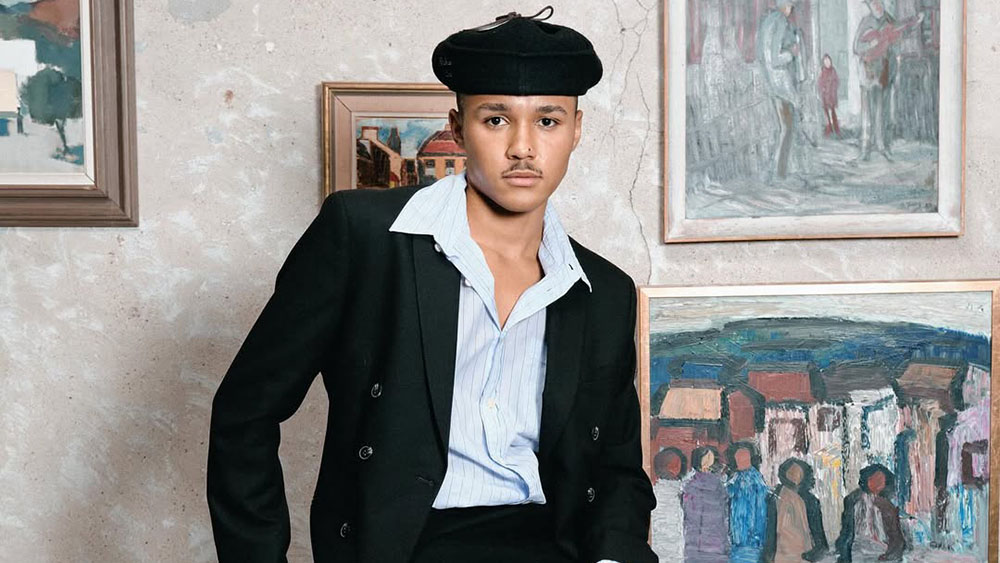
While at an event in London Dior Dowell was approached by a brand eager to collaborate with the young influencer, inviting him to attend their store opening. The excitement was short lived when Dior realised, they were expecting him to do this for free.
They asked if he could create content that would be used to promote the new store, however, no fee or pricing was discussed. This left Dior questioning as to why he was never offered a fee, knowing other influencers approached by the brand were paid.
“I’m quite familiar with people in this industry that had the same deal.” says Dior, a 24-year-old mixed-raced influencer from Birmingham who recently moved to London. “I’m seeing on their posts they’re putting “ad” and “paid partnership” next to it, and I wasn’t offered a paid fee, but they were. It kind of made me think, like, why were you getting paid for that and I wasn’t.”
Dior suspected his collaboration with the brand was unfair due to the use of #ad and #paidpartnership (as required when advertising by the Advertising Standards Authority) in the works of other influencers showing they had been paid for their content.
Seeing that other influencers were paid for the same work despite having the same amount of followers and the same level of engagement on their social media, made Dior question the reasons for him not being offered a fee. “It made me think, could race be a factor, because the two people that stuck out to me who were getting paid was one white guy and one white girl.”
The brand also implied how this opportunity would be good for his own benefit. However, Dior chose to decline the unpaid collaboration saying respectfully he doesn’t need a free trip to their store.
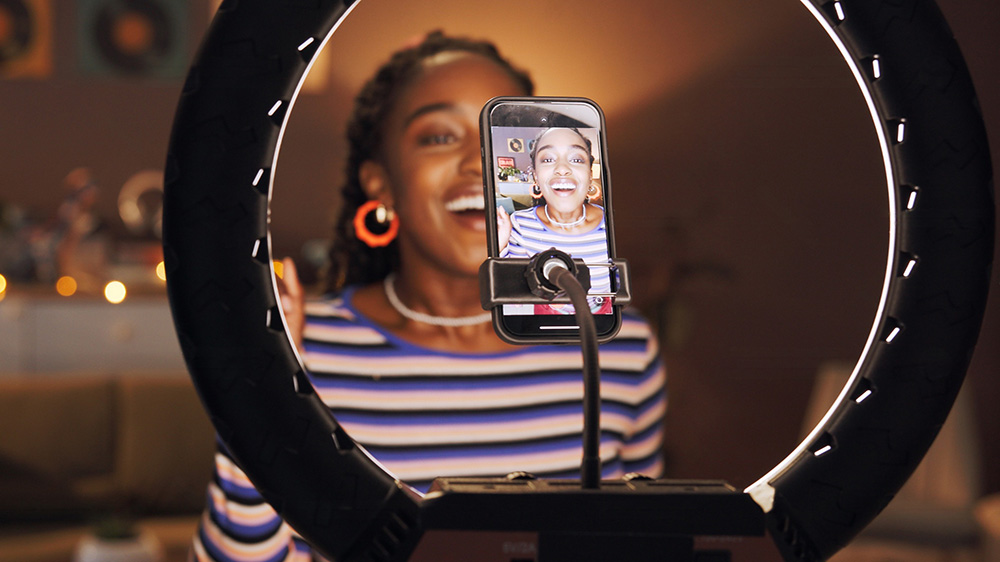
Other influencers have voiced frustration at how some brands expect black creators to work for free, while paying white influencers who may have fewer followers or weaker engagement, even when black influencers’ content performs better for those brands.
Fashion and lifestyle influencer Gratsi took to her YouTube channel to share the realities of being a black content creator. She described how disheartening it can be, particularly as a dark-skinned woman, when brands claim they don’t have the budget to pay her a fee but are willing to gift products instead.
While working on a brand campaign, Gratsi discovered that the two other participants, who were white, were paid, while she and her friend, who is also black, received no fee and were never asked about payment, despite Gratsi having nearly double the followers of her white peers. The brand later told her that her content had generated the highest engagement of the entire campaign, despite this Gratsi says she was still not paid.
Dior and Gratsi’s experiences are far from unique. Across the UK, black content creators say they are still battling racial pay gaps in the influencer industry. Many express frustration that brands underpay them, with recent reports showing they are still less likely to receive fair pay for the same work as others in the industry.
Exposing the Influencer Pay Gap
Not long after launching the Instagram account the Influencer Pay Gap, Adesuwa Ajayi was overwhelmed as her inbox quickly filled with messages. Many of them exposed stark pay disparities that disproportionately left black influencers short changed.
Adesuwa was all too familiar with how brands “lowballed” creators, having worked as a senior account manager at the black-owned management agency AGM Talent, where she oversaw a roster made up almost entirely of black influencers. She wanted to create a safe space for creators to discuss rates openly, share their experiences, and offer guidance on what fees they should be negotiating.
Some of the stories were shocking. In one post, a white influencer claimed she was still paid £5,000 for a beauty brand campaign she eventually was cut from. However, a now-deleted comment on the same post revealed that a black influencer who featured in the final campaign had only received £1,000.
Many comments on the account described feeling “abused” and “violated,” expressing disbelief at how consistently black women were paid less than their white peers, often by the very same high-end brands.
The Influencer Pay Gap account became more than just a platform exposing pay disparities. It evolved into a community hub, connecting influencers with industry experts, stylists, social media specialists, and agency owners who could help them navigate the challenges of the industry.
Influencer Pay Gaps: How Skin Tone and Hair Texture Affect Earnings
Charlotte Stavrou, who founded the SevenSix Agency, recently published the 2024 Influencer Pricing Report. The report not only examines how influencer fees are set but also sheds light on the role that skin tone, hair texture, race, and ethnicity play in shaping those rates.
The report found that skin tone remains a major factor in influencer earnings. Influencers with darker skin are paid nearly 44.63% less than those with lighter skin. On Instagram, darker-skinned creators on average earn £928, compared with £1,675 for lighter-skinned creators.
It also highlighted pay disparities based on hair texture. Influencers with type 4B hair (coil tight curls) earned an average of £800 per post, compared with £1,713 for those with type 2A hair (loose, wavy).
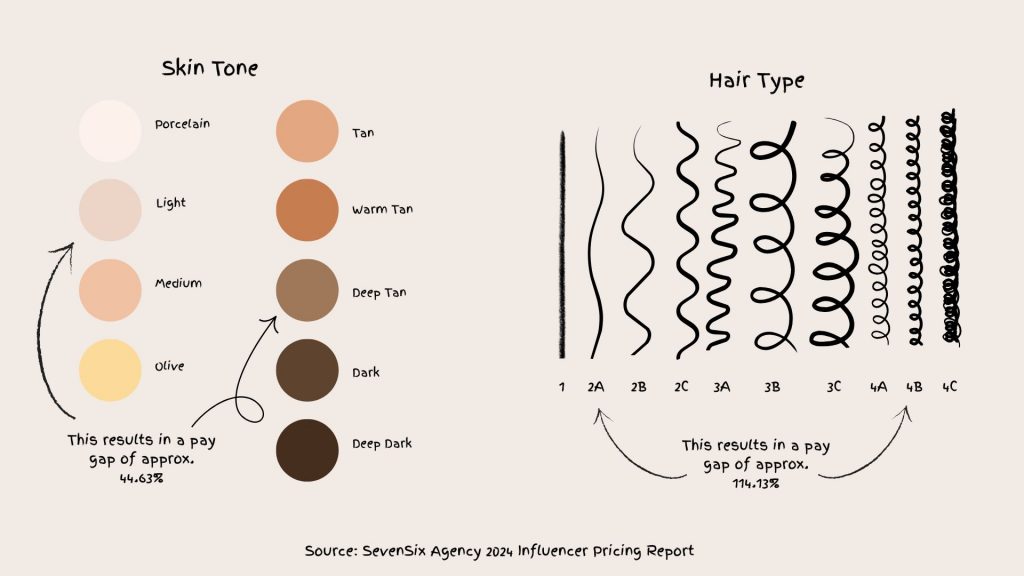
tone earns the most.
“Our Influencer Pricing Report serves as a call to action for brands and agencies,” says Charlotte. “It is essential that we bridge the gap between creators and brands, ensuring fair compensation for all influencers regardless of their background. This commitment to transparency and equity is at the heart of everything we do at SevenSix Agency.”
To help influencers better understand how much they should earn, the report offers guidance for both Instagram and TikTok.
On Instagram, pay is largely tied to the follower count. Influencers with 1,000–5,000 followers earn £250–£350 per post, while those with 300,000+ followers can command £4,000–£15,000.
TikTok works differently, with views and likes playing a bigger role than follower numbers. Posts with 1,000–5,000 views can earn £100–£200, while videos reaching 50–100 million likes can bring in £6,000–£12,000.
Why Fair Pay Remains Out of Reach for Many Black Creators
After moving to London in 2021, Archie Versarchie’s stylish flair and infectious energy quickly caught the attention of brands eager to collaborate. He has since worked with companies such as ASOS, Adidas, and Dove, and is now represented by the SevenSix Agency. But while this may look like a success story, Archie is all too familiar with the ongoing challenges of being a black influencer.
Despite being able to negotiate high rates, Archie says he is still offered fees that are below his rates and in some cases outright disrespectful.
“I almost did a campaign recently for like £500 for two videos, which is way below my rate,” he says. “My agency kept trying to make this campaign work for me, to make it seem doable. But the truth is, this is the kind of campaign we should never say yes to. It’s flat-out disrespectful.
“Still, you kind of have to say yes if you want money. It’s still money, you know. And when it’s your only source of income, it’s really, really frustrating and borderline sometimes breakdown-worthy when you’re just not being paid.”
Along with low-rate offers, Archie says that there can be a long delay with brand payments, sometimes exceeding the 30-day contractual agreement.
“I’m currently waiting for over 90 days now for an invoice for a campaign that I turned around in like two days over a weekend. So it’s like, you can work really hard on the campaign and then have to wait 90 days to get paid for it. And then even after those 90 days, a lot of brands can still pay you late.
Archie adds that there’s not much he can do when brands delay payment and that late fee penalties are often ignored.
“Sadly, brands have a lot more leverage than us as an individual, so they can kind of take the piss as much as they want. And you are still going to have to say yes to working with them if you want more work. So that sucks.
“I just wish that people, especially dark-skinned black people, just magically had the leverage to be able to say, you know what, no, you need to pay me more and for them to be like, yeah, OK, we’ll pay you more.”
Charlotte says there is a growing crisis of late payments for content creators, criticising agencies for “exploiting” their talent who often write contracts that let them off the hook if brands don’t pay on time. More importantly, she warned that brands themselves are directly harming the creators who drive their campaigns.
Archie, like 77% of black influencers in the UK, fall into the nano or micro-influencer category (under 50,000 followers), compared with 59% of white influencers. A British government report stated that Black influencers often face greater challenges in growing large followings, which in turn makes it harder for them to negotiate higher rates for their content.
Despite these challenges, Archie says he is fortunate to have an agency that advocates for him and takes a stand, adding that many agencies don’t prioritise their creators in the same way.
From day one, diversity and inclusion weren’t just buzzwords for us, they were the reason the agency existed. We didn’t wait for the industry to catch up; we challenged it to do better. That meant calling out the pay gaps, pushing back on tokenism, and holding brands accountable when their campaigns didn’t reflect their audience.
says Charlotte Stavrou, founder of SevenSix Agency
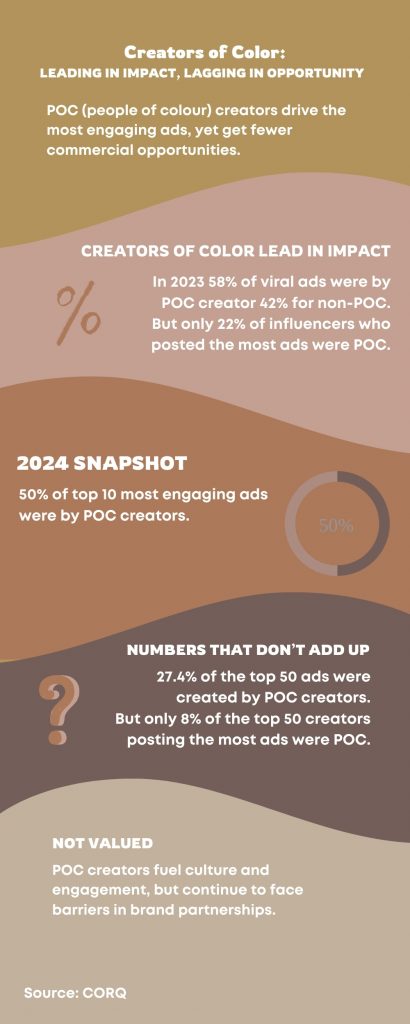
Is unionisation the answer for fairness within the content creator industry?
The creator economy is rapidly expanding, now valued at more than $250 billion (£182 billion). In the UK alone, there are an estimated 98,000 creators. With calls for a creators’ union gaining momentum, the question is whether unionisation would help close the gap or risk widening it further.
Back in 2020, the UK’s first union for digital content creators was established by fashion influencer and author Nicole Ocran, alongside co-founder and influencer expert Kat Molesworth. At the time, Nicole told The Guardian that more than 400 influencers had signed up to join The Creators Union (TCU), many of them feeling exploited within the industry through unpaid work, delayed payments, or unfair contracts.
The exploitation of influencers was heavily experienced during the Black Lives Matter movement where many black and mixed-raced influencers were flooded with offers as brands were highly eager to work with them.
“All of a sudden it was like, ‘Oh, we need you to take over our social media, we need you to do this, that’s, when normally you’re largely ignored.” says Nicole. Despite the high demand for brands to work with black influencers, she added that many were asked to work for nothing.
Like most unions, TCU aims to fight for fairness for all influencers while supporting those who are underrepresented. But not everyone believes unionisation is the right path for the creative industry.
Roberto Blake, founder of Awesome Creator Academy, says that the structure of a union simply doesn’t work in this space. In a post he shared on LinkedIn, Roberto writes that a union is “doomed to fail” because of the immense diversity within the creator economy. From hobbyists to full-time entrepreneurs, creators’ needs vary too widely for one union to meet them all.
He also warns that rigid structures could limit the independence that draws people to content creation in the first place. And for those already at a disadvantage particularly black creators the stakes are even higher. Without explicit commitments to diversity and equity, he says, unionisation risks recreating the same systemic inequalities that already exist in the industry.
Roberto believes that agencies are a more practical, flexible solution. Agencies, he says, can provide tailored representation, negotiation expertise, and career development support addressing many of the same issues a union would, but in ways that recognise individual differences.
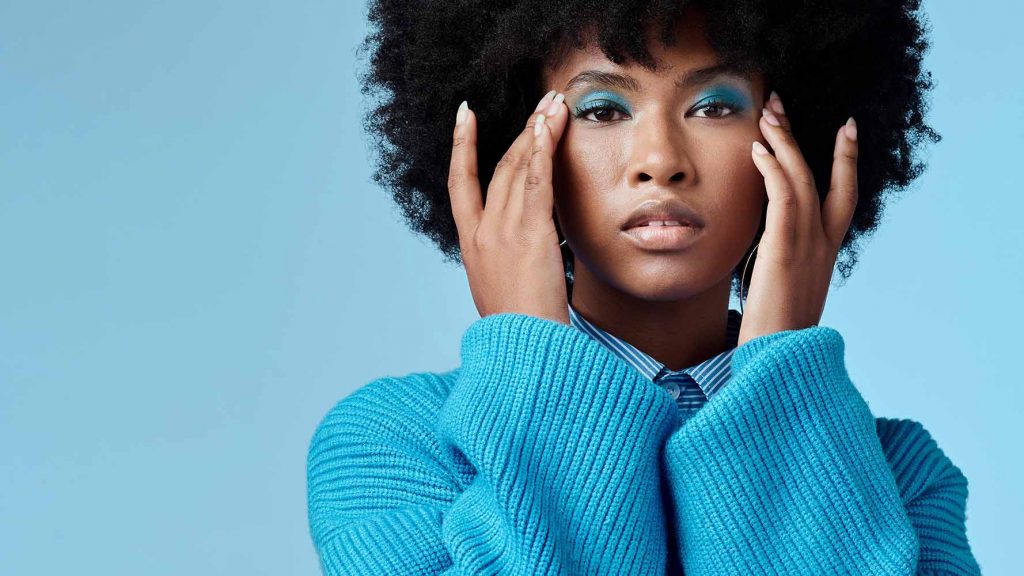
Tokenism Persists Despite Growing Opportunities for Black Creators
With over 2.5 million likes on TikTok, WESTY, a lifestyle content creator from London, has landed a major brand deal with Adidas — despite only working full-time as a creator for just over a year.
His natural love for sports and the outdoors makes the collaboration a perfect fit, and he enjoys working with a brand he feels respects diversity and representation. However, he recalls a moment when a PR agent told him he had been hired solely because of his race.
“I went on a hiking trip, and the PR lady said, ‘I looked at the list, and every single person was just white,'” he said. “She was like, ‘This is ridiculous, we need some representation.’ She was a black woman, and then they reached out to me. So it felt like I was the token backup black guy, you know.”
Despite some progress for black creators, the feeling of being hired primarily for diversity is far from new.
Dior says there have been times at events or campaigns when he and others feel like they’re just there to tick a box.
I’ve definitely seen where a brand has reached out and you’ll see the roster of the talent. They’ll send a spreadsheet of who the talent is and I’m thinking, yeah, you’ve definitely ticked the box with adding me, which is quite sad.
says Dior
The lack of representation of black content creators at brand events or on high-profile campaigns remains noticeable, despite brands’ efforts to be more inclusive.
Charlotte says, “ The UK creative industry is moving in the right direction when it comes to representation, there are growing efforts to support inclusion. But real change is still too slow. There’s a lack of diversity behind the scenes, and many underrepresented creatives still face major barriers.”
No More Excuses and Building Visibility
When the Black Lives Matter movement swept across the UK, many big brands and magazines suddenly shifted their tone. Their feeds and pages began highlighting black influencers, rolling out list after list of the “Top Five Black Creators You Need to Follow.”
For content creator Tinuke Bernard the sudden visibility was welcomed before she quickly noticed the same names appeared in list after list.
“Not to say these five black influencers aren’t good. They are great, but there are hundreds of us. We are not a monolith,” says Tinuke, a podcaster and blogger.
“You’re showing the same people, they’re all lifestyle and fashion influencers. Where are the sports influencers. Where are the ones talking about money, cars, homes, interiors. There’s so much more to us.”
Challenged to prove her point after being tagged in one of the posts, Tinuke asked her followers to share their favourite black influencers. By the next morning, she had compiled a list of 150 UK black bloggers, influencers, and creators, publishing the first version of the UK Black Influencer Directory on her website.
The response was immediate. Tinuke woke up to thousands of page views and comments and even discovered publications already using her directory to connect with black creators.
“We had brands come and say, ‘Thank you so much for this list,’” Tinuke says. “One said they’d been telling management to work with more black influencers, only to be told, ‘We can’t find them.”
The directory quickly became more than just a list. It was a tool that gave overlooked creators visibility and opened doors to new opportunities. Influencers began landing brand deals and partnerships they might otherwise never have had access to.
With categories ranging from sports to interiors, and direct links to social media accounts, Tinuke had stripped away the industry’s most common excuse.
Tinuke says, “It’s a poor excuse of saying oh we couldn’t find you before, but that excuse was taken out of the way. Now it’s like, well look there’s a list. Find them. What category are you looking for, they’re all there.”
But perhaps the most powerful outcome was showing the true scope of black creativity.
“There are so many different ways to be black. We’ve got so many different interests and we’re not only just talking about racism or not only just talking about blackness. We can talk about sports, we can talk about all these other things, and I think that was really powerful to show and to see.”
Today, the UK Black Influencer Directory continues to connect brands with creators. But for Tinuke, the project is bittersweet.
She built something the industry desperately needed yet wishes it hadn’t been necessary in the first place.